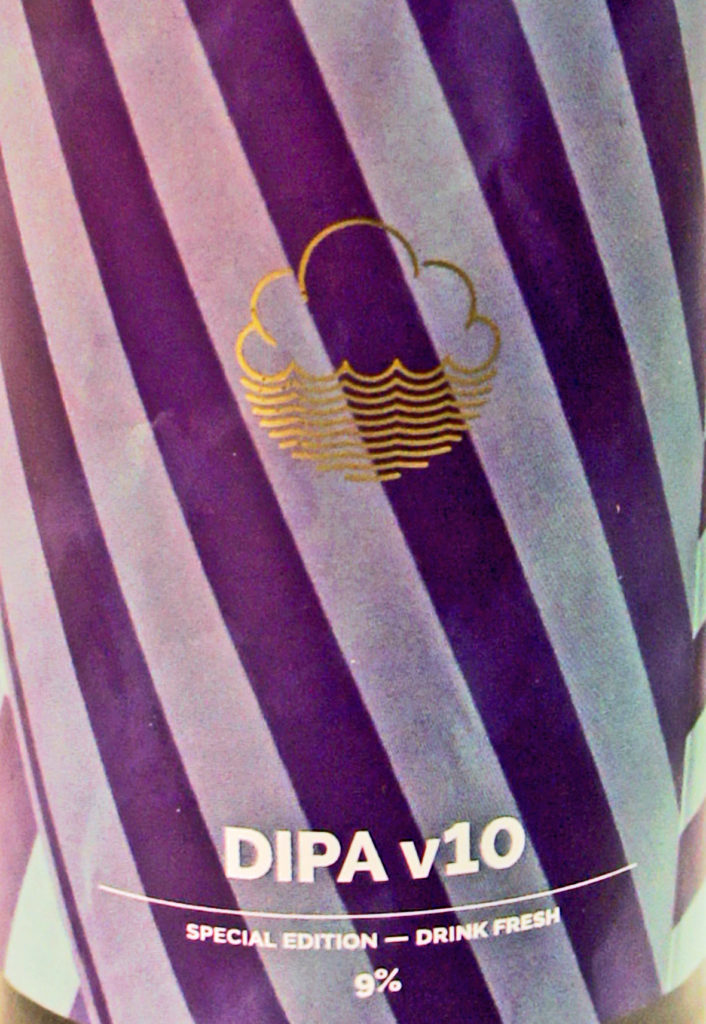If you think the major problem facing the Campaign for Real Ale today is whether or not to embrace “craft keg”, or how to prevent more pub closures, then like the campaign itself you’re failing to acknowledge the elephant not just dominating the room but loudly trumpeting in your ear – the latest trumpeting being the news that Cloudwater, the highly regarded Manchester brewer barely two years old, is to give up making cask beer. That elephant is the one marked in big letters down both flanks “poor beer quality”, and despite Camra being founded 46 years ago to fight that exact battle, and – originally – that battle alone, it’s still a war far, far from won.
When Cloudwater started in 2015, the plurality of its output was in cask – 45 per cent, against 25 per cent in keg and the rest in bottle. Last year that was down to 23 per cent in cask, and the rest split almost evenly between bottle and keg. Now, with a new canning line starting up, co-founder Paul Jones says cask production is being halted, and the expected output for 2017 will be 60 per cent keg, 40 per cent bottle and can – with the aim to more than double annual turnover from £1.15million to £2.7 million and 13,000hl/8,000 barrels. Paul lists several reasons for dropping cask: the price the market will accept, which is less than the price it will accept for keg beer, despite all the expense of racking, handling and collection casks on insufficient margin; the fact that, tbh, Cloudwater finds the beers it can sell in keg and bottle more exciting than those it can sell in cask; and finally, and most pertinently to this debate, “another often encountered set of issues”, the quality problem. In his end-of-year blog round-up, Paul complained that slightly hazy casks of keg were being “flatly refused” without being tasted, while casks tasting of diacetyl, either through brewing faults or because they were being served too young, are “all too often good to go”.
Cask beer, Paul said, “should take pride of place in every bar and pub”, but it “requires not just the same skill and discipline as keg beer to brew but also requires excellent stewardship to be pulled in to a glass in a way that best represents the establishment, the brewer and the rich and varied heritage of cask beer in the UK.” He doesn’t say so directly, but the implication is clear: Cloudwater doesn’t believe that the “excellent stewardship” is there at the point of sale in enough bars to present any cask beer it produces in the way that would give the best possible result for the customer.
It is not alone. I interviewed a number of leading names in the UK brewing world on the subject of beer quality recently, and they all agreed there is still a huge, huge problem. Rob Lovatt, head brewer and production director at Thornbridge in Derbyshire, another of the half dozen or so most admired new breweries in the UK, said: “Despite being extremely proud of the craft beer revolution in the UK, I often shy away from ordering a new craft beer unless I’m damn sure it’s going to be a good pint. Often craft beer can be not just hazy but actively soupy, flat and/or oxidised, and people are expected to pay a premium for these beers.” Alastair Hook, founder of Meantime Brewing in Greenwich, London, the most successful new brewery start-up in the past 45 years, and now owned by the Japanese brewer Asahi, has consistently refused to involve Meantime in the “cask ale” segment, believing that whatever bonuses cask-conditioned ale might bring in terms of flavour, the downsides of lack of stability and openness to infection inevitable with cask beer mean the customer is much better off with the consistency provided by “craft keg”.
However, he said, and this is a vital point regularly ignored, “all of the afflictions that cask ale suffers from apply to brewery-conditioned beers, and this is where there is a major threat to all beer regardless of type. Poor line cleaning, interchanging beers, many of which are infected because of poor practice at the brewery, warm storage, warm chain distribution, antiquated dispense systems that cannot be cleaned, all paint a worrying picture. The first wave of craft breweries in the US fell foul of quality issues in the 1990s. Hundreds didn’t make the next decade. If brewers in the UK are complacent, the same will happen here. Meantime invests hundreds of thousands of pounds annually to counter this threat. The threat is real – and as we say in industry, you are only as good as your last beer.”
Meanwhile Camra’s “revitalisation” project (which everybody knows is solely about deciding whether the campaign is going to recognise keg craft or not, despite all the frankly tedious baggage attached about support for cider, pub closures and so on) trundles slowly forward, with any vote on whatever final proposals come out now postponed to 2018. Only the deeply cynical would suggest the delay is in the hope that a few thousand more Camra dinosaurs might have died by then, increasing the chances of getting radical proposals through. Though since Camra membership is heavily skewed towards the grey-haired end of society, between the announcement of the revitalisation project consultations in the spring of last year and the final document in the spring of next year, assuming that Camra contains at least twice as many over-60s as UK society in general (a reasonable assumption, I suggest, given that apparently 70 per cent of respondents to the most recent part of the revitalisation consultation were over 50) then given the average mortality rate for the over-60s in Britain, the grim reaper will have called time on almost 8,000 Camra members in those two years.
I’m not totally convinced Camra can be saved in the long term, given the online comments I read from craft beer drinkers who clearly see Camra members as dull, boring, elderly people drinking dull, boring, elderly beer. The problems with recruiting young activists to the campaign have been apparent for years – and the really dreadful statistic from the revitalisation project consultation is that under 3 per cent of responders were under 30. I’m in the “dull, boring and elderly” cohort myself, but I love, eg, Cloudwater DIPA as much as I love Fuller’s Chiswick. However, I fear anyone turning up to a Camra branch meeting is more likely to meet someone like Tim Spitzer, former chair of West Norfolk Camra branch, than someone like me. I am sure Mr Spitzer has done an enormous amount of good work for the cause of real ale in the Norfolk region and, having been a Camra branch chairman myself, I know what hard work the job is. But his rant in the latest edition of Norfolk Nips, the local Camra magazine, is certain to guarantee that anyone under 40 who reads it will decide instantly that the campaign holds no welcome for them.
As I read Mr Spitzer’s attack on “craft beer” – “it’s not cask-conditioned real ale and never will be and Camra should have nothing to do with it” – I thought: “You really don’t get it, do you, granddad?” (rather ironic, of course, because I’m 64 and Mr Spitzer may actually be younger than me). Like too many Camra members, he forgets what Camra was actually founded for – to improve beer quality, and nothing else. The concept of “real ale” did not even exist when the original “Campaign for the Revitalisation of Ale” began in 1971. “Have we all forgotten the fight against Watney’s Red Barrel and the big national brewers?”, Mr Spitzer cries. Mate, Watney’s Red disappeared 38 years ago. You would have to be 56 today to have (legally) drunk a pint of it in a British pub. Today’s young drinkers haven’t “forgotten” Red Barrel, they never knew it in the first place: it’s totally irrelevant to them, and anyone shouting on about it in the context of modern craft beer is inviting justified ridicule. Mr Spitzer finishes his spittle-flecked attack on the 21st century by proclaiming: “If Camra accepts craft beer then I for one will no longer be a member.” To which the only correct and proper response is: don’t let the door bang your arse on your way out.

